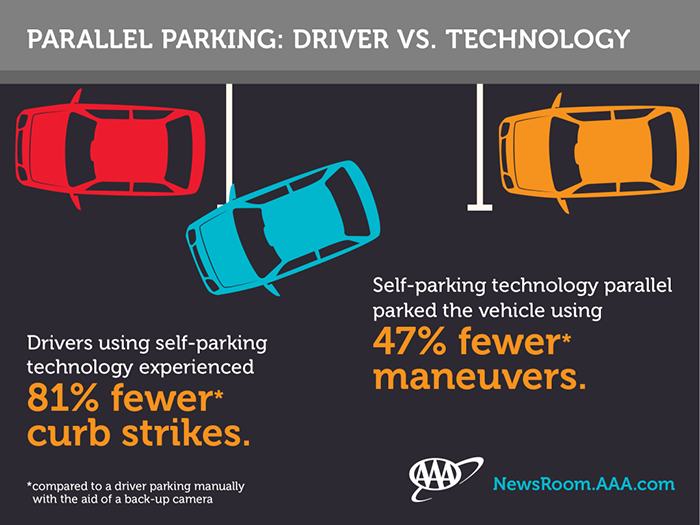Self-Parking Technology vs. American Drivers
As advanced automotive technology takes over everything from speed control to emergency braking, naysayers question the performance of these systems and their ability to operate the vehicle as effectively as veteran drivers. Parking assistance, for example, utilizes a range of high-tech sensors, electric power steering and a vehicle computer system to detect an appropriate space and park the vehicle. Can these systems possibly park more accurately than an experienced driver?
A AAA survey found that nearly 80 percent of American drivers would not trust this technology to parallel park their vehicle. So AAA put the technology to the test: four drivers completed parking maneuvers with and without parking assistance in a timed, closed-course event. The results were surprising:
- Drivers using parking assist experienced 81 percent fewer curb strikes than drivers parking without assistance.
- The systems positioned the vehicle within the parking spot more consistently using fewer maneuvers than un-assisted drivers.
- Self-parking systems parallel parked the vehicle using 47 percent fewer maneuvers.
- Parking assist systems positioned the vehicle 37 percent closer to the curb than un-assisted drivers.
- Some systems were able to parallel park in very tight spaces – as little as four feet longer than the vehicle – which test drivers would not have attempted.

The technology is not without flaws: some systems parked too close to the curb, leaving wheels and tires vulnerable to scratches and costly repairs. Some systems also were complicated to use. Still, drivers stressed out by parallel parking now have a new ally in the quest for faster, more efficient parallel parking.




